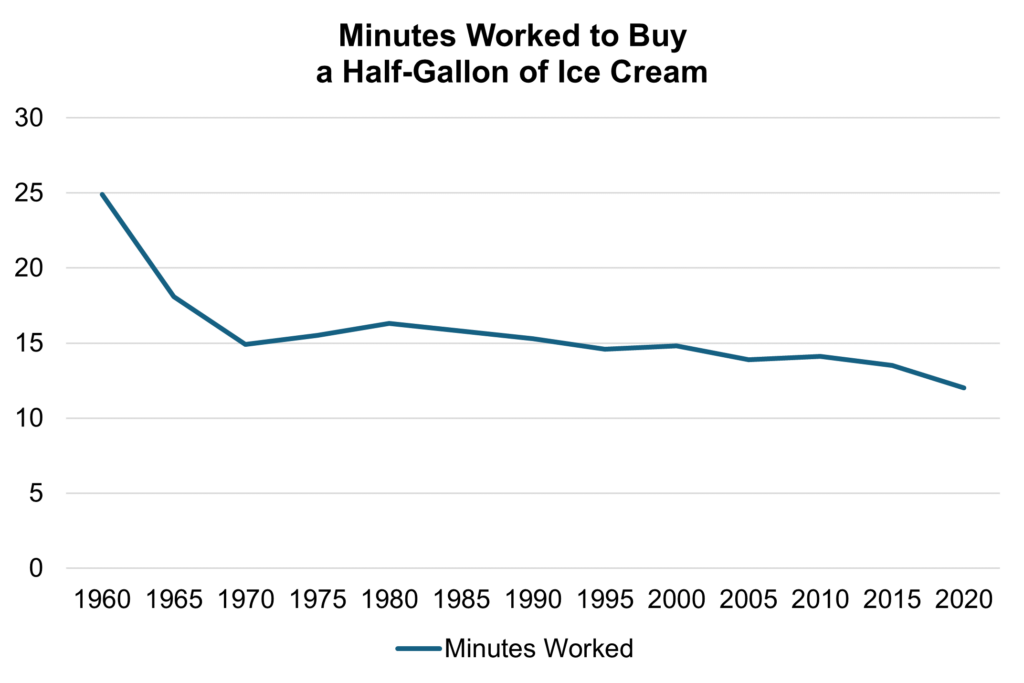Impress your friends and dazzle your pub trivia team: Did you know that the average American worker only needs to work half as long to pay for a half gallon of ice cream as in 1960? Can you say, luxurious and affordable?
It’s in the numbers. Despite hourly wages that averaged $2.09 an hour the year John F. Kennedy was elected president (and both Joe Biden and Donald Trump were teenagers), the relative changes in wages and ice cream prices have made America’s favorite frozen dessert (Happy National Ice Cream Month) twice as affordable now, according to Labor Department data. What once took nearly 25 minutes of a U.S. worker’s hourly wage to buy takes less than 12 minutes now.

Butter holds a similar ratio, and whole milk and cheese affordability has also improved significantly. And still, some people long for the good old days.
You can find this information on page 85 of Dairy Data Highlights, a compendium of historical dairy statistics compiled by the NMPF/USDEC Dairy Economics Unit. The publication features facts on the evolution of farm sizes, milk production and dairy revenues, and the emphatic growth in the prominence of trade to the U.S. dairy economy. (Commercial dairy exports, 1985: 571 million pounds of milk equivalent. Commercial dairy exports, 2022: 40,581 million pounds.)
Suffice it to say, Dairy Data Highlights makes everyone’s summer beach reading list complete. And unlike current best sellers like “The Women,” or “On Call,” Dairy Data highlights is free – just download here.
That’s why the entire dairy community needs to know of this resource. See the rise in average herd sizes! Be wowed by the growth of processed gruyere exports! But mainly, know that this is out there. And use it as you need.






